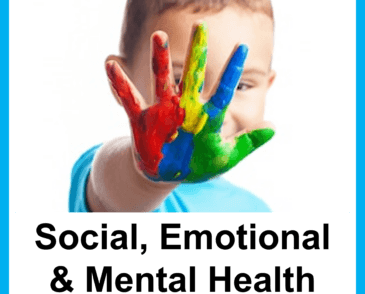

Last Updated - February 5, 2025
Supporting an understanding of young children’s self-regulation – Early Years – Social, Emotional and Mental Health
All young children need support with some aspects of their personal, social and emotional development. Some children remain regulated when presented with day-to-day challenges whereas others may find it more difficult to manage their emotional responses.
The foundations of emotional and cognitive self-regulation in the early years are integrally tied together, and both are necessary for behavioural self-regulation. Emotions running very high get in the way of cognitive aspects of self-regulation, as a child who is experiencing very strong emotions will have difficulty in holding back impulses, focusing attention, or thinking in flexible ways to solve problems. Over arousal of the emotional part of the brain constrains the thinking part, so a child who is very upset will first need help through emotional co-regulation before they can begin to think about the situation.
Self-regulation – page 20 Birthto5Matters-download.pdf
Following a dysregulation, one may appear calm, but the levels of the stress hormone Cortisol can remain in the body for some time afterwards, this could result in repeated dysregulation could occur again.
Developing self-regulation, like many elements of development and learning, is not something children do by themselves. It is a process that grows out of attuned relationships where the caregiver and baby or child are closely attentive to each other and engage in sensitive, responsive exchanges.
Self-regulation involves children’s developing ability to regulate their emotions, thoughts and behaviour to enable them to act in positive ways toward a goal.
Self-regulation depends on and grows out of co-regulation, where adults and children work together toward a common purpose, including finding ways to resolve upsets from stress in any domain, and return to balance.
Self-regulation is not the same thing as compliance, such as sitting still and listening when expected to. A child who is stressed and struggling to resist the impulse to move or speak is very different from a child who is calm and alert, in a balanced state of feeling, thinking, and behaviour. Children can fluctuate in their capacity to self-regulate just as adults can. It is not a fixed state. However, noticeably large regressions may indicate high levels of distress or be in response to a traumatic experience.
Self-regulation – page 20 Birthto5Matters-download.pdf
View and/or download the Torbay Early Years Toolkit here: Torbay Early Years Graduated Approach Toolkit – Family Hub
